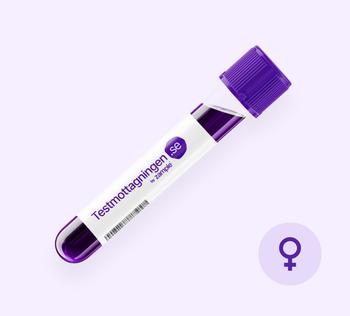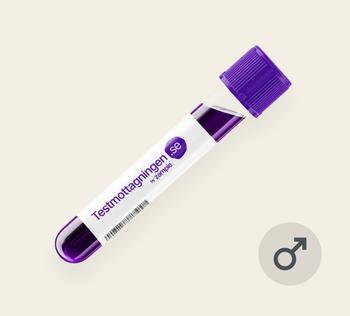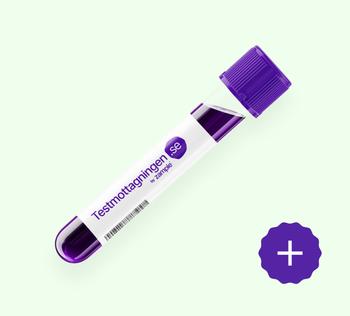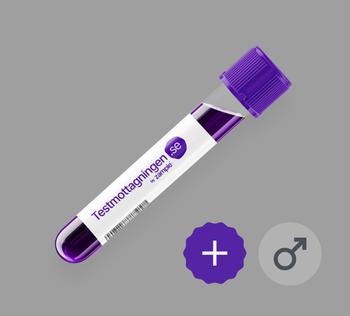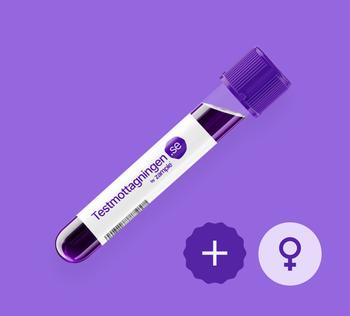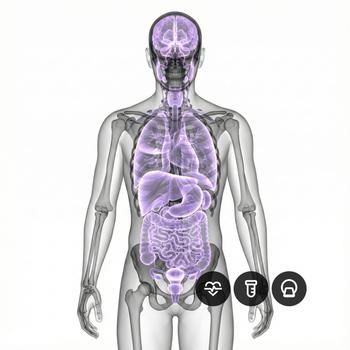What is Vitamin D (S-25-hydroxy)?
Vitamin D S-25-hydroxy is a form of vitamin D that is a marker of total body levels of vitamin D. It is a measure of how much vitamin D has formed in the skin and is important in assessing whether a person has adequate levels of vitamin D. Vitamin D is a fat-soluble vitamin that is essential for bone health and for the immune system to function properly. It is important for maintaining strong bones and teeth, as well as for the function of the immune system and muscle strength. Vitamin D deficiency can lead to a number of health problems, including osteoporosis, rickets and an increased risk of infections.
How is vitamin D formed?
Vitamin D is produced in the skin in response to exposure to ultraviolet B (UVB) radiation from the sun. When UVB radiation hits the skin, it triggers the synthesis of vitamin D3 (cholecalciferol). Vitamin D3 is then converted to calcifediol in the liver and calcifediol is converted to calcitriol in the kidneys. Calcitriol is the active form of vitamin D which is responsible for its effects in the body.
People with dark skin have more melanin, which can make it harder for the skin to produce vitamin D from sunlight.
Vitamin D can also be obtained from certain foods, such as fatty fish, beef liver and egg yolks, and from dietary supplements. The recommended daily intake of vitamin D varies according to age, gender and stage of life, but most adults need between 10 and 20 micrograms per day.
Why is vitamin D analyzed?
Vitamin D levels are often checked as part of a routine blood test or when a person has symptoms that may be related to a vitamin D deficiency. Some of the reasons to check your vitamin D levels are:
- To control vitamin D deficiency – vitamin D deficiency can cause a number of health problems, including osteoporosis, rickets and an increased risk of infections.
- To monitor the effectiveness of vitamin D treatment – if a person is taking vitamin D supplements or has been prescribed vitamin D for a deficiency, levels can be checked to ensure that the treatment is effective.
- To assess bone health – vitamin D plays a key role in bone health, and low levels of vitamin D have been linked to osteoporosis and other bone problems.
- To investigate the cause of certain symptoms – vitamin D deficiency can cause a range of symptoms, including muscle weakness, bone pain and fatigue. Checking vitamin D levels can help identify the cause of these symptoms.
- Monitoring certain medical conditions – certain medical conditions, such as inflammatory bowel disease and liver disease, can interfere with the body's ability to absorb vitamin D. Checking vitamin D levels can help monitor the status of these conditions.
What can elevated levels of vitamin D be due to?
A high level of vitamin D can occur when taking vitamin D supplements or other dietary supplements that contain vitamin D. A high level of vitamin D in the body can be a sign of a medical condition, if you are concerned about your vitamin D levels you should contact your health center for help in determining the cause and help with possible treatment if necessary.What can low levels of vitamin D cause?
A low level of vitamin D can be due to a lack of sun exposure if you spend too little time outside, or for people who live in areas with little sunlight as it can be difficult to get enough vitamin D from sunlight alone. Or because of the season like during the winter months when there is less sunlight.
People with dark skin have more melanin, which can make it harder for the skin to produce vitamin D from sunlight. And the skin of older people is less efficient at producing vitamin D.
Certain medical conditions, such as Crohn's disease, celiac disease and cystic fibrosis, can make it difficult for the body to absorb vitamin D.
Vitamin D is stored in fat cells, so people who are overweight or obese may have lower levels of vitamin D.
It is important to note that everyone's vitamin D needs are different and can be affected by a variety of factors.
About vitamin D deficiency
Vitamin D deficiency can cause various health problems, such as for example:
Weak bones and osteoporosis:Vitamin D is important for bone health, and low levels of vitamin D have been linked to osteoporosis, a condition that causes weak and brittle bones.
Rickets:Vitamin D deficiency can cause rickets, a condition that causes softening and weakening of the bones in children.
Increased risk of infections:Vitamin D plays a role in immune system function, and low levels of vitamin D have been linked to an increased risk of infections.
Muscle weakness:Vitamin D is important for muscle strength, and low levels of vitamin D can cause muscle weakness.
Fatigue:Vitamin D deficiency has been linked to fatigue and brain fatigue.
Depression:Some research suggests that low levels of vitamin D may be linked to an increased risk of depression.
Cognitive impairment:Low levels of vitamin D have been linked to cognitive impairment in older adults.
Symptoms of vitamin D deficiency
Vitamin D deficiency manifests itself with many non-specific symptoms:
- tiredness, fatigue, brain fatigue, exhaustion
- bad mood, irritability
- concentration difficulties
- sleep disorders
- pain in head and neck
- muscle weakness
- increased susceptibility to infections
Symptoms of vitamin D deficiency may not be obvious, and many people with low levels of vitamin D experience no symptoms. It is important to get enough vitamin D to maintain good health, while it is important not to get too much vitamin D, which can be harmful if consumed in excess.
Too much vitamin D can be harmful
According to the Swedish Food Agency, large amounts of vitamin D are toxic and can cause excessive levels of calcium in the blood and thus also calcium deposits in the kidneys and kidney failure.
If you only eat regular food, there is no risk of overconsumption of vitamin D in harmful amounts, but through dietary supplements containing vitamin D, you can get too much. According to the European Food Safety Authority, Efsa, an upper limit for vitamin D intake is 100 micrograms per day for adults.
Risk groups for vitamin D deficiency
Risk groups with 10 micrograms recommended supplementation of vitamin D per day are:
- all children under 2 years
- children and adults who do not eat fish
- children and adults who do not eat fortified foods
- children and adults who do not eat fish or fortified foods
- children and adults with covering clothing over the face, arms and legs or who do not stay in the sun during the summer.
Risk groups with 20 micrograms of recommended supplementation of vitamin D per day are:
- everyone over the age of 75
- children and adults with covering clothing over the face, arms and legs or who do not stay in the sun during the summer and also do not eat fish and vitamin D-enriched foods.
Source for recommended intake per day for risk groups: Swedish Food Agency "Livsmedelsverket".
























